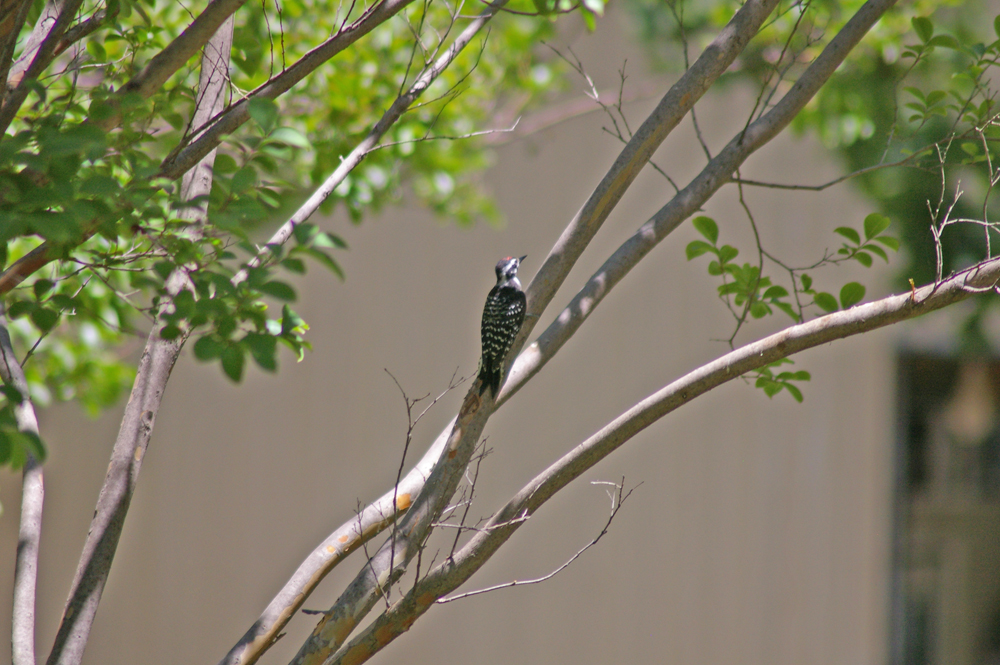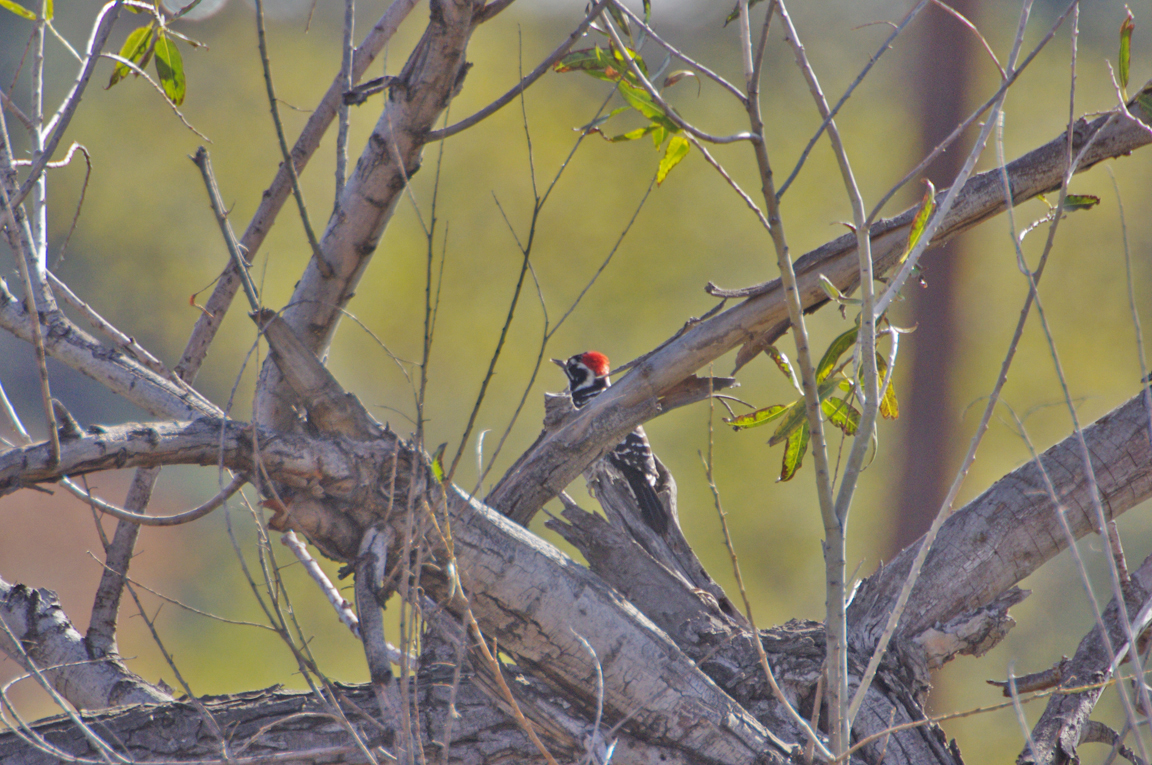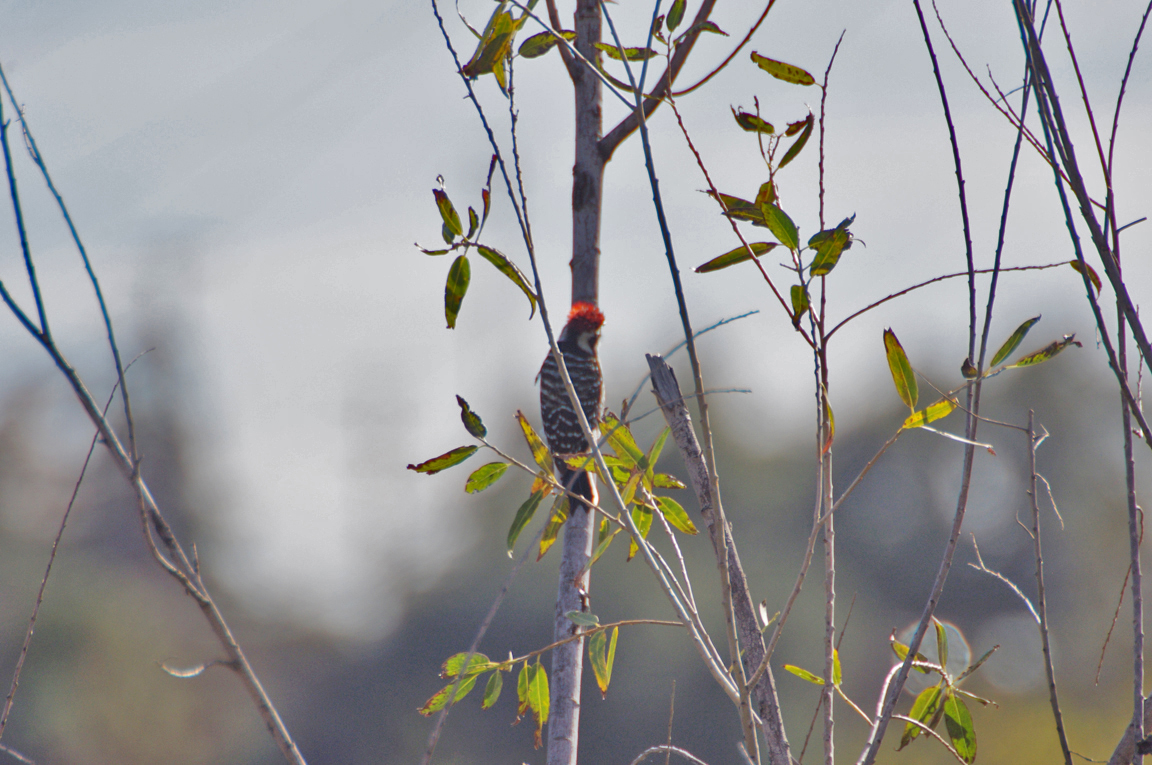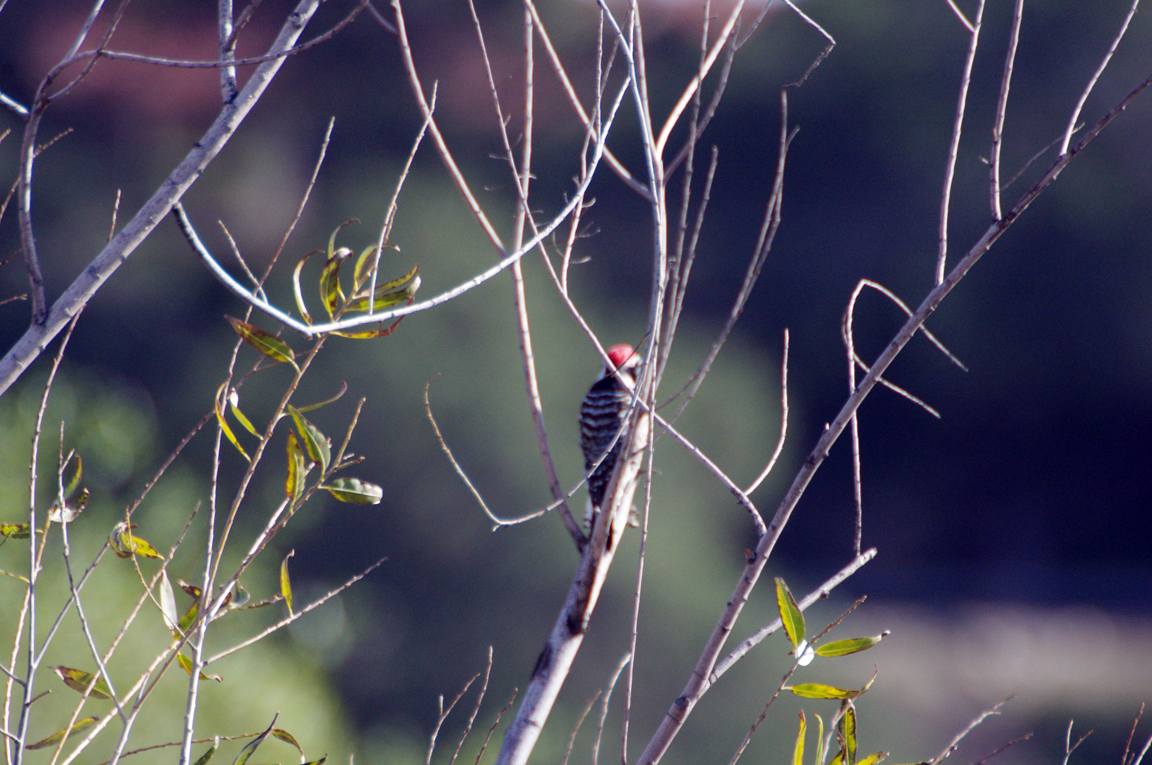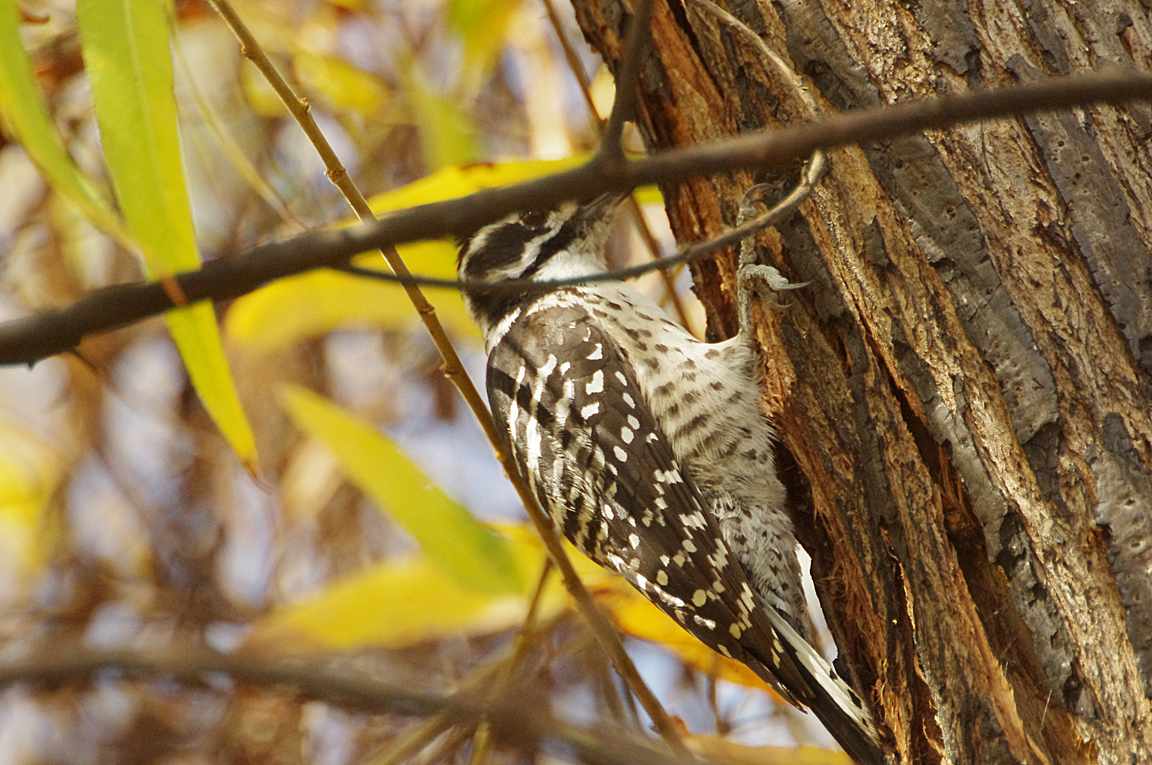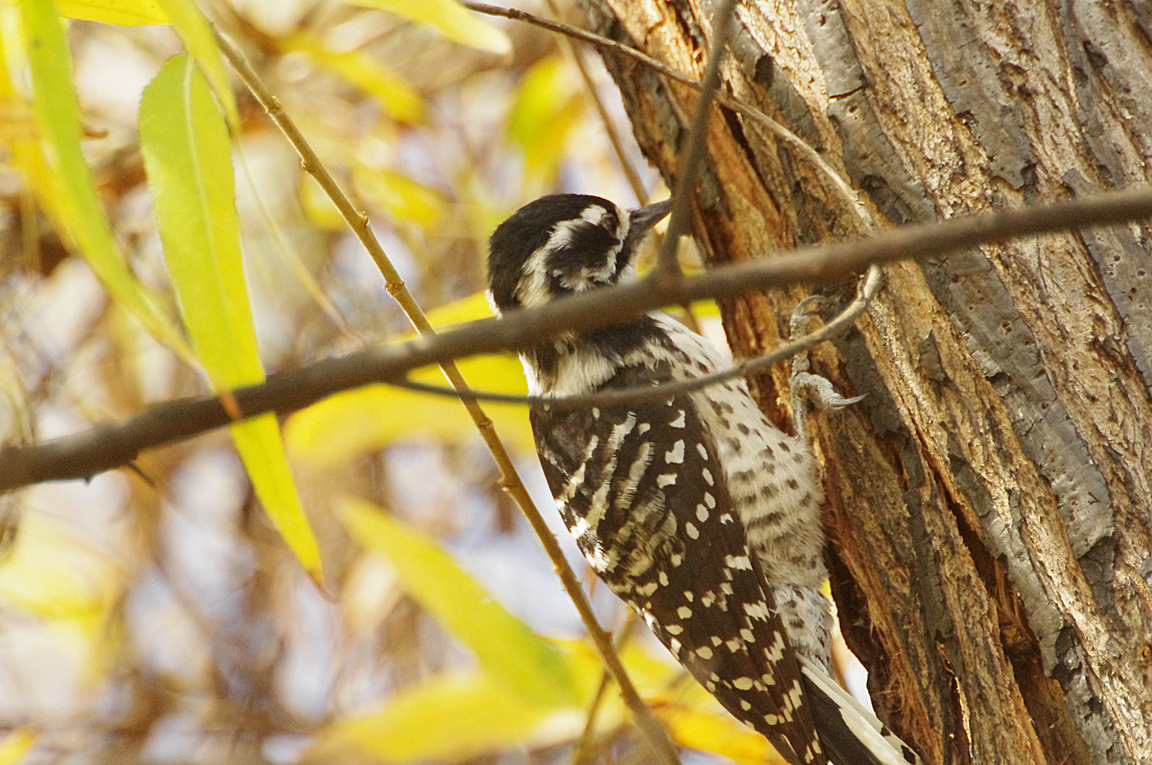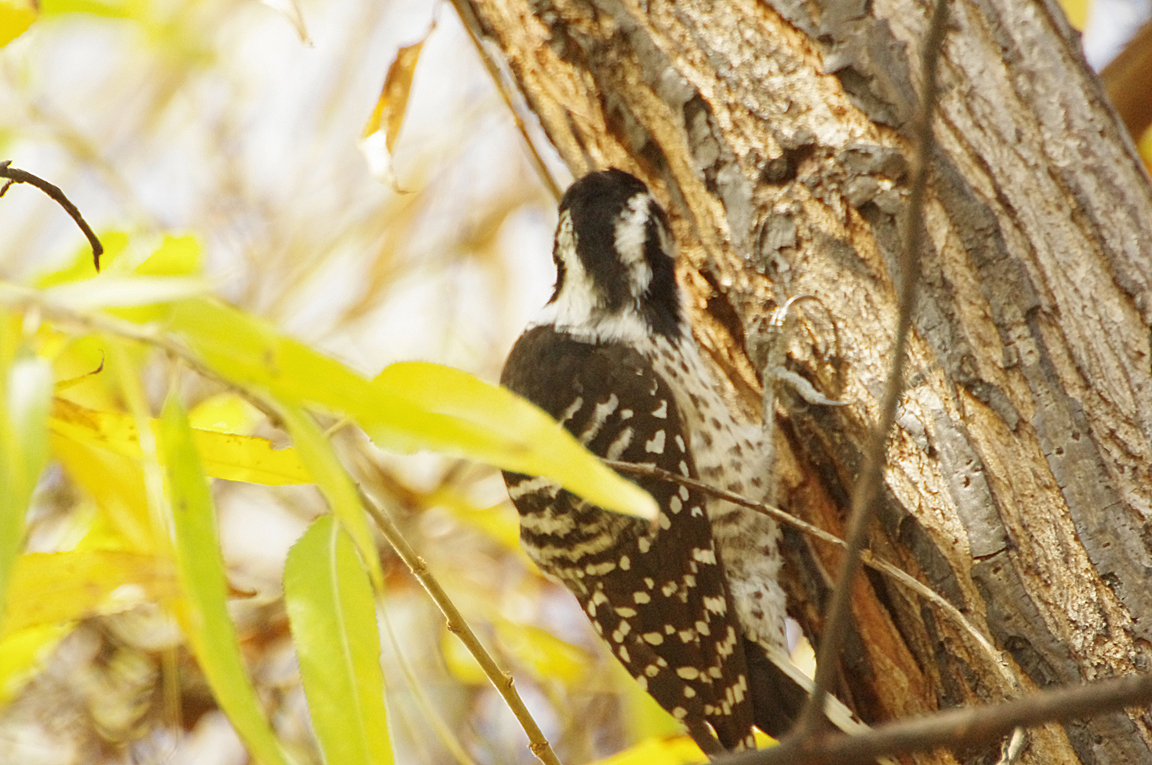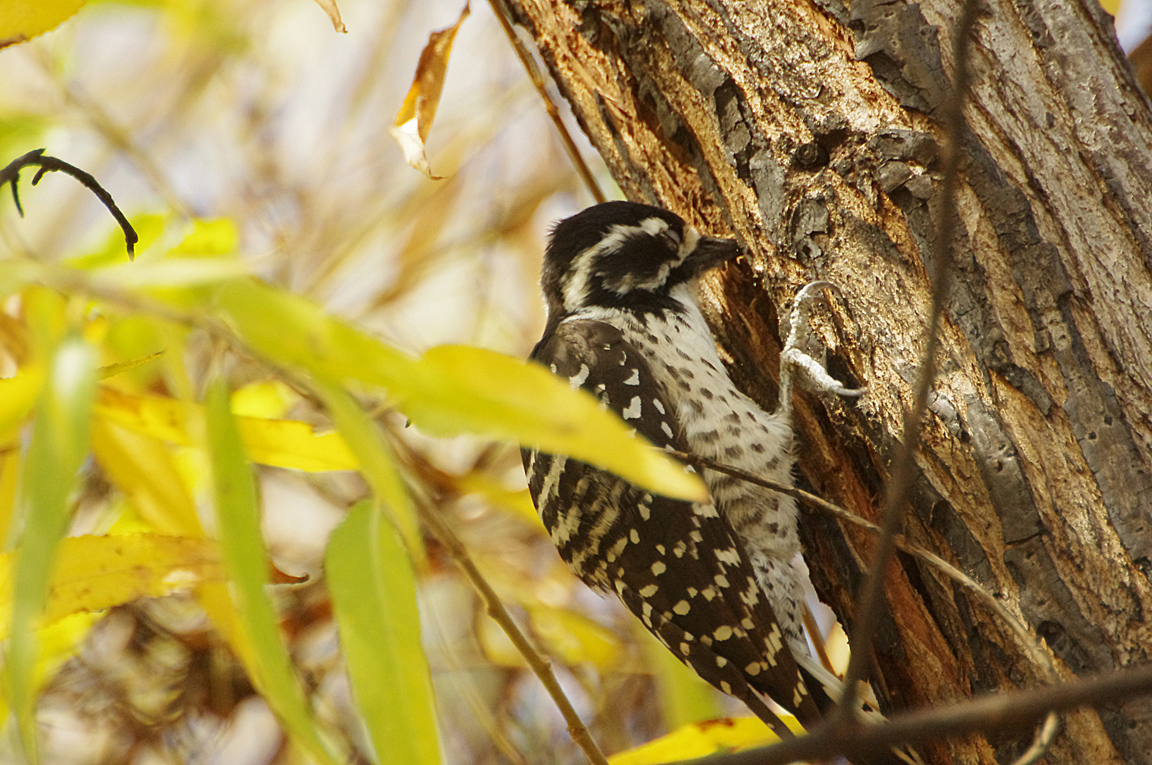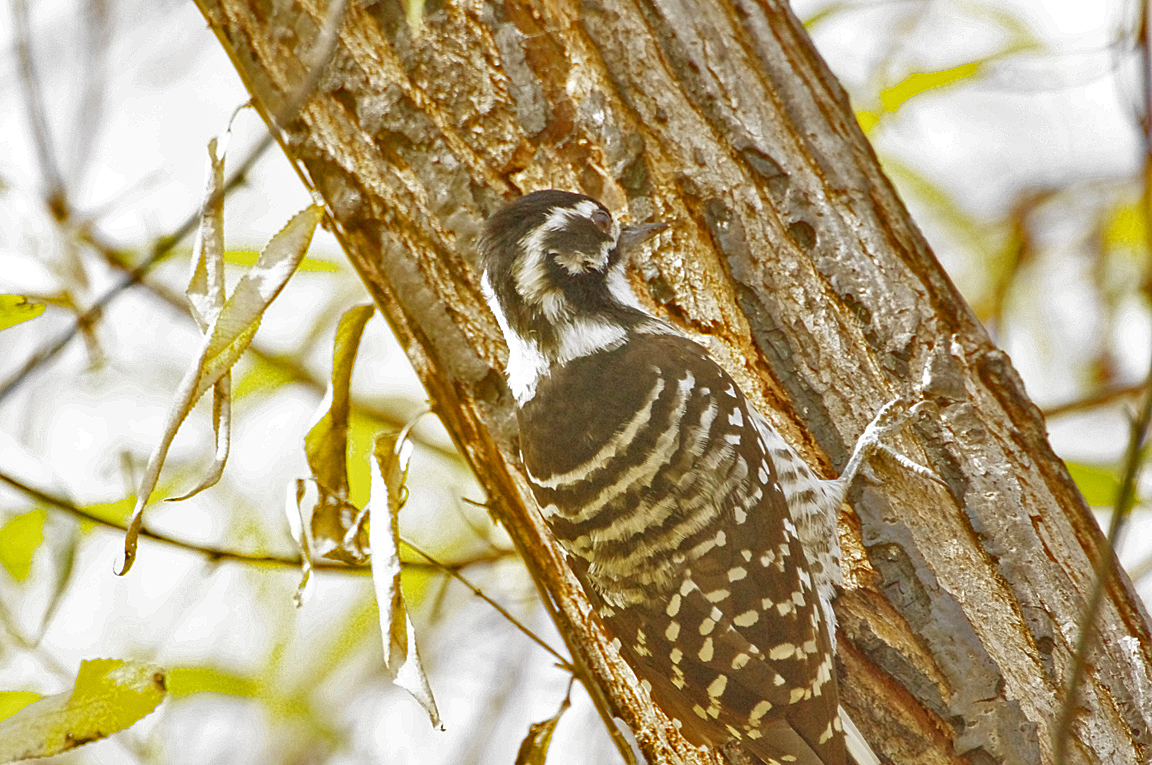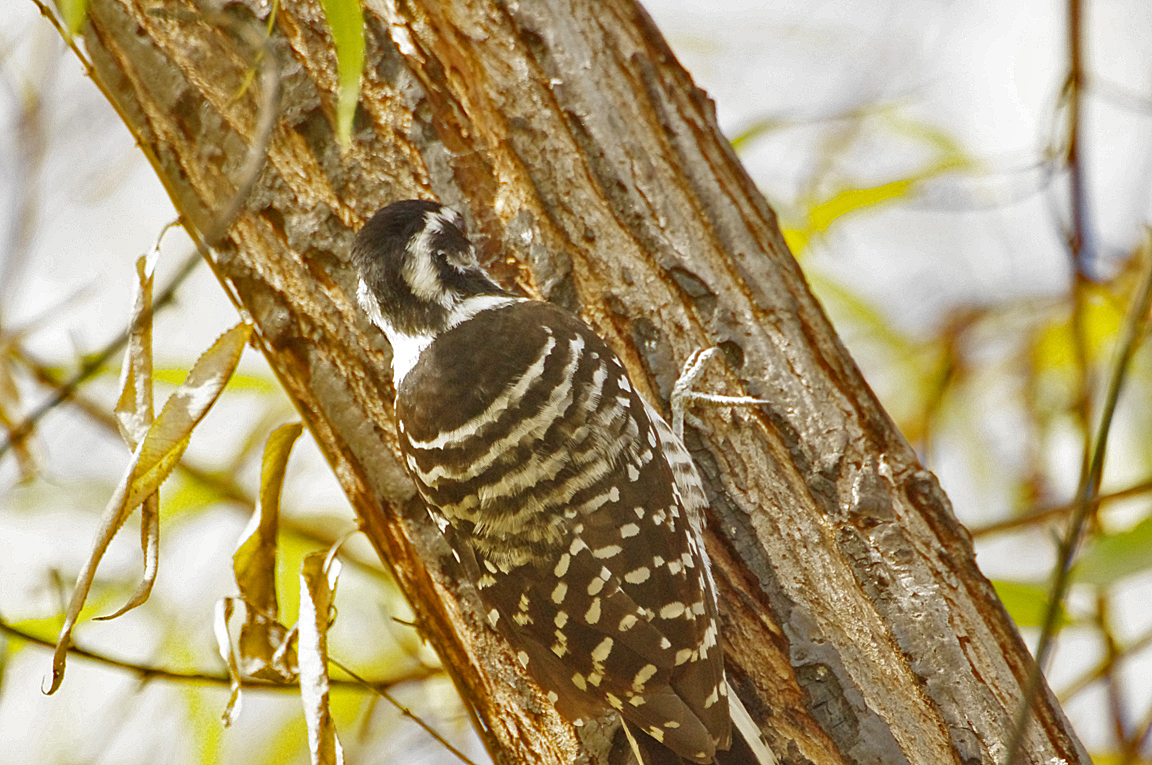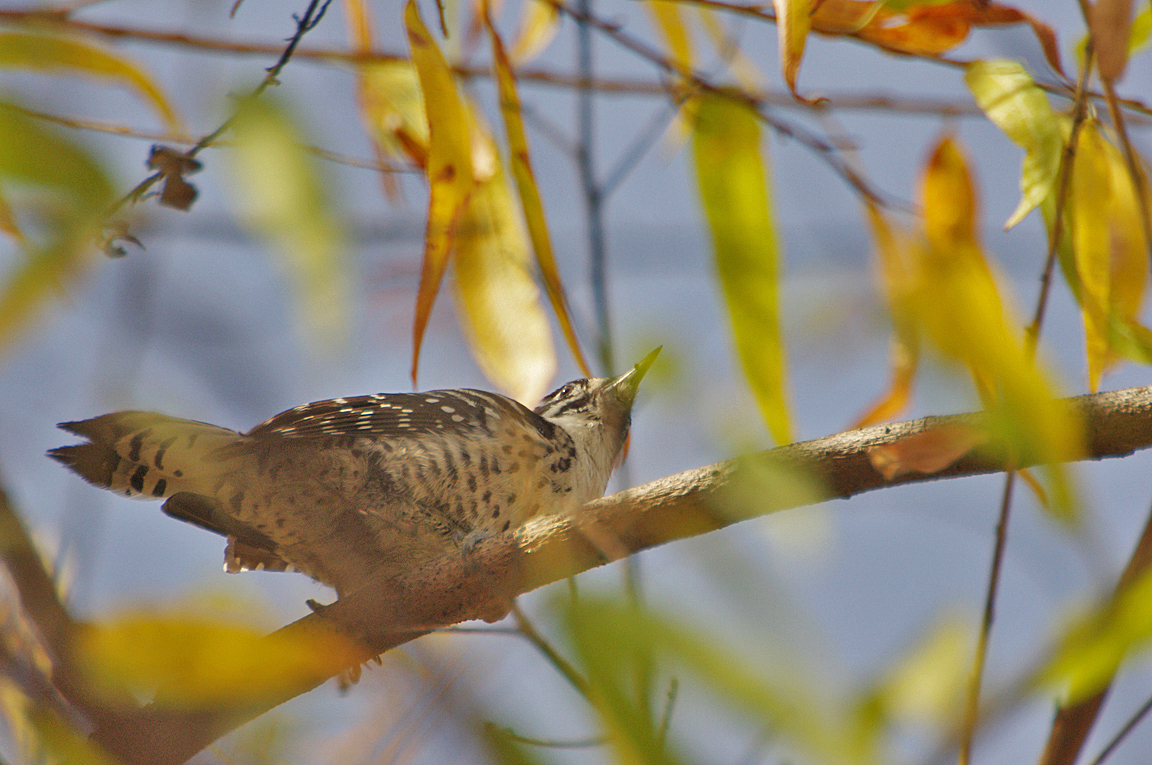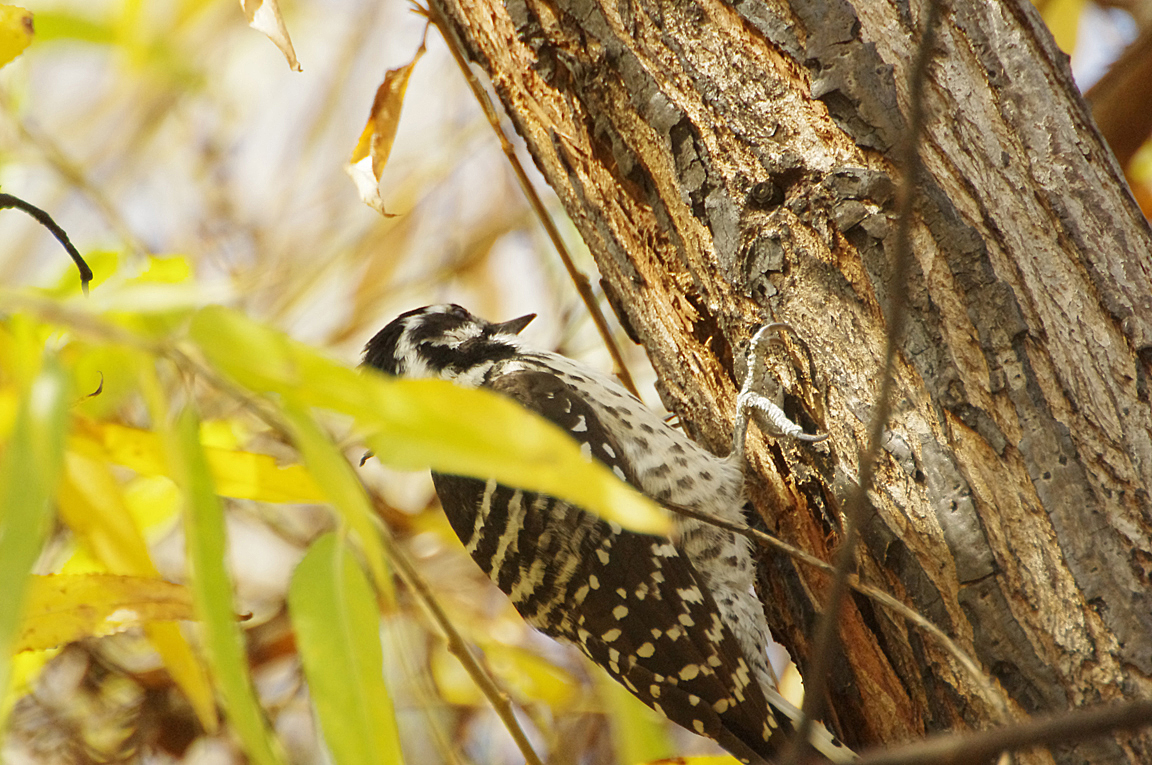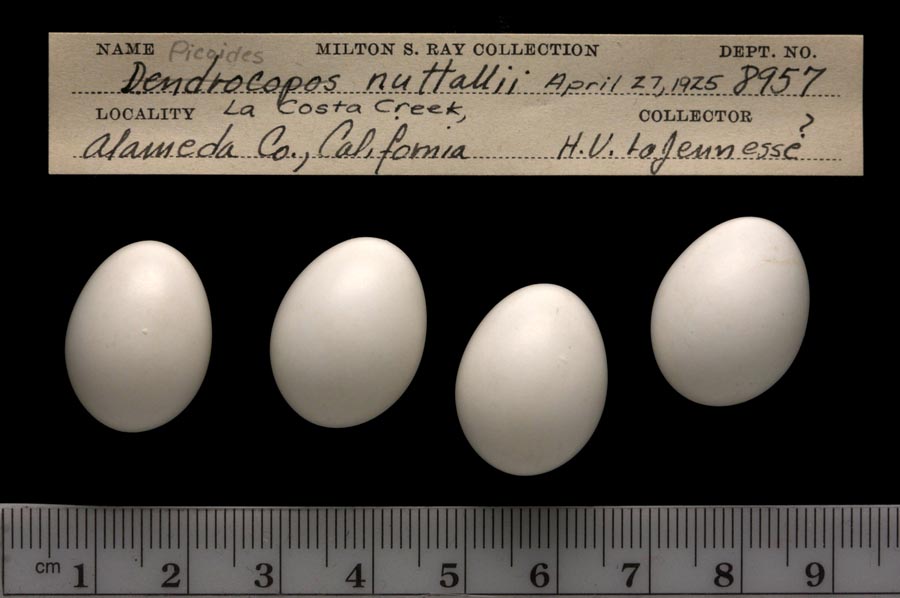|
|
|
 |
Nuttall's Woodpecker
|
| Picoides nuttallii | |
A small woodpecker confined primarily to the oak woodlands of California.
Interesting Information
Although Nuttall's Woodpeckers are nearly confined to oak woodlands, they do not eat acorns.
Description
Adult Description
-
Size: 16-18 cm (6-7 in)
-
Weight: 30-45 g (1.06-1.59 ounces)
-
Small black-and-white woodpecker.
-
Black-and-white barred back, with unbarred black region at top of back.
-
Black face with white malar stripe and a white stripe over the eye going back to the nape of the neck.
-
Throat, breast, and belly white.
-
Spots and streaks of black along sides and under tail.
-
Outer tail feathers white with black spots.
Sex Differences
Male with red on back of head, female black.
Male
Male with forehead black, streaked with white on center of crown, red on rear crown and upper nape.
Female
Female with forehead, crown, and nape black with some white streaking.
Immature
Juveniles of both sexes have red on crown. Red feathering is less extensive than on adult male.
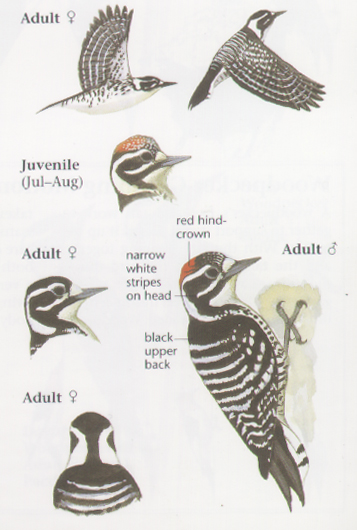
Photo taken from: The Sibley Field Guide by David Allen Sibley
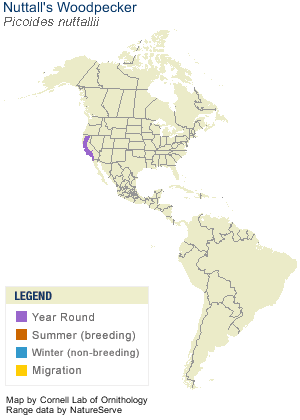
© 2003 Cornell Lab of Ornithology
|
Habitat |
|
Found primarily in oak woodlands and in riparian woods; rarely in conifers. |
|
Behavior |
|
Forages by gleaning, probing, prying and tapping. |
|
Food |
|
Insects and arthropods, some fruit. |
Taxonomy
| Kingdom: | Animalia |
| Phylum: | Chordata |
| Subphylum: | Vertebrata |
| Class: | Aves |
| Order: | Passeriformes |
| Family: | Picidae |
| Subfamily: | Picinae |
| Genus: | Picoides |
| Species: | Picoides nuttallii |
Similar Species |
|
|
Bird Sound |
|
Call note a double "pitik." |
|
Eggs look like this |
|
Photo taken from: ARCTOS Collaborative Collection Management Solution |
